Low-Cycle Fatigue of FRP Strips Glued to a Quasi-Brittle Material
Abstract
:1. Introduction
2. Outline of the Numerical Model
2.1. Fundamental Assumptions
- -
- The cracking (debonding) process develops in pure “mode II” throughout the FRP-to-concrete interface;
- -
- The bond–slip law consists of a first linear-elastic branch followed by a softening one intended to simulate the effect of the debonding process;
- -
- An exponential expression is assumed for the post-elastic softening branch of the bond–slip law;
- -
- The concrete substrate is assumed to be behave as a rigid body.
2.2. Main Equations
2.3. Numerical Implementation and Experimental Validation
3. Parametric Analysis
3.1. Parametric Field
- -
- Fracture energy GF ranging between 0.6 and 1.0 N/mm;
- -
- Specific axial stiffness Eftf ranging between 60 and 140 kN/mm;
- -
- Bond length L ranging between 100 and 300 mm.
3.2. Definition of the Related Dependent Parameters
3.3. Typical Behavior of FRP-to-Concrete Joints
4. Discussion
5. Conclusions
- -
- As expected, the force amplitude ΔF controls the number of cycles leading to debonding in the analyzed systems: the relationship between the amplitude ratio 2ΔF/Fmon and the number of cycle reversals 2N is well-described by S-N curves that are close to straight segments in the usually adopted log-log plane;
- -
- Therefore, two parameters (the factor a and the exponent b) were determined for each series of numerical simulations carried out for given values of GF, Eftf and L and variable values of the ratio 2∆F/Fmon;
- -
- The results reported clearly show the essential role played by the bond length L, especially in the case of a “short” bond length, that is to say, values of L lower than the effective bond length leading to maximum strength under monotonic loads;
- -
- Far from being considered as the final study on this subject, the results give an idea of the actual order of magnitude of the parameters controlling the S-N curves and the correlation between them and the bond length.
Supplementary Materials
Author Contributions
Funding
Institutional Review Board Statement
Informed Consent Statement
Data Availability Statement
Conflicts of Interest
References
- Hollaway, L.C. A review of the present and future utilisation of FRP composites in the civil infrastructure with reference to their important in-service properties. Constr. Build. Mater. 2010, 24, 2419–2445. [Google Scholar] [CrossRef]
- Teng, J.G.; Chen, J.F.; Smith, S.T.; Lam, L. FRP Strengthened RC Structures; John Wiley & Sons, Ltd.: Chichester, UK, 2001. [Google Scholar]
- ACI. Guide for the Design and Construction of Externally Bonded FRP Systems for Strengthening Concrete Structures, ACI-2R-08; ACI: Farmington Hills, MI, USA, 2008. [Google Scholar]
- CNR. Guide for the Design and Construction of Externally Bonded FRP Systems for Strengthening Existing Structures, CNR-DT200/2013; Consiglio Nazionale delle Ricerche: Rome, Italy, 2013.
- Kang, T.H.-K.; Howell, J.; Kim, S.; Lee, D.J. A state-of-the-art review on debonding failures of FRP laminates externally adhered to concrete. Int. J. Concr. Struct. Mater. 2012, 6, 123–134. [Google Scholar] [CrossRef] [Green Version]
- Chajes, M.; Finch, W.; Januska, T.; Thomson, T. Bond and force transfer of composite material plates bonded to concrete. Struct. J. 1996, 93, 208–217. [Google Scholar]
- Czaderski, C.; Martinelli, E.; Michels, J.; Motavalli, M. Effect of curing conditions on strength development in an epoxy resin for structural strengthening. Compos. Part B Eng. 2012, 43, 398–410. [Google Scholar] [CrossRef]
- Cornetti, P.; Carpinteri, A. Modelling the FRP-concrete delamination by means of an exponential softening law. Eng. Struct. 2011, 33, 1988–2001. [Google Scholar] [CrossRef]
- Caggiano, A.; Martinelli, E.; Faella, C. A fully-analytical approach for modelling the response of FRP plates bonded to a brittle substrate. Int. J. Solids Struct. 2012, 49, 2291–2300. [Google Scholar] [CrossRef] [Green Version]
- Nigro, E.; Di Ludovico, M.; Bilotta, A. Experimental investigation of FRP-concrete debonding under cyclic actions. J. Mater. Civ. Eng. 2011, 23, 360–371. [Google Scholar] [CrossRef]
- Yun, Y.; Wu, Y.-F.; Tang, W.C. Performance of FRP bonding systems under fatigue loading. Eng. Struct. 2008, 30, 3129–3140. [Google Scholar] [CrossRef]
- Carloni, C.; Subramaniam, K.V.; Savoia, M.; Mazzotti, C. Experimental determination of FRP-concrete cohesive interface properties under fatigue loading. Compos. Struct. 2012, 94, 1288–1296. [Google Scholar] [CrossRef]
- Ko, H.; Sato, Y. Bond stress-slip relationship between FRP sheet and concrete under cyclic load. ASCE J. Compos. Constr. 2007, 11, 246–419. [Google Scholar] [CrossRef]
- Li, X.; Chen, J.F.; Lu, Y.; Yang, Z. Modelling static and dynamic FRP-concrete bond behaviour using a local concrete damage model. Adv. Struct. Eng. 2015, 18, 45–58. [Google Scholar] [CrossRef] [Green Version]
- Caggiano, A.; Martinelli, E.; Said Schicchi, D.; Etse, G. A modified Duvaut-Lions zero-thickness interface model for simulating the rate-dependent bond behavior of FRP-concrete joints. Compos. Part B Eng. 2018, 149, 260–267. [Google Scholar] [CrossRef]
- Kuma, M.; Roth, S. General remarks on cyclic cohesive zone models. Int. J. Fract. 2015, 196, 147–167. [Google Scholar]
- Bocciarelli, M. A new cohesive law for the simulation of crack propagation under cyclic loading. Application to steel- and concrete-FRP bonded interface. Theor. Appl. Fract. Mech. 2016, 114, 102992. [Google Scholar] [CrossRef]
- Carrara, P.; De Lorenzis, L. A coupled damage-plasticity model for the cyclic behavior of shear-loaded interfaces. J. Mech. Phys. Solids 2015, 85, 33–53. [Google Scholar] [CrossRef]
- Martinelli, E.; Caggiano, A. A unified theoretical model for the monotonic and cyclic response of FRP strips glued to concrete. Polymers 2014, 6, 370–381. [Google Scholar] [CrossRef] [Green Version]
- Zhou, H.; Fernando, D.; Chen, G.; Kitipornchai, S. The quasi-static cyclic behaviour of CFRP-to-concrete bonded joints: An experimental study and a damage plasticity model. Eng. Struct. 2017, 153, 43–56. [Google Scholar] [CrossRef]
- Martinelli, E.; Caggiano, A. Numerical simulation of the fatigue behaviour of FRP strips glued to a brittle substrate. In Proceedings of the FraMCoS-9—9th International Conference on Fracture Mechanics of Concrete and Concrete Structures, Berkeley, CA, USA, 28 May–1 June 2016; Saouma, V., Bolander, J., Landis, E., Eds.; [Google Scholar] [CrossRef]
- Martinelli, E.; Zhou, H.; Fernando, D. Cyclic Response of FRP-to-Concrete Adhesive Joints: Effect of the Shape of Bond-Slip Model. In Proceedings of the SMAR 2017—Fourth Conference on Smart Monitoring, Assessment and Rehabilitation of Civil Structures, Zürich, Switzerland, 13–15 September 2017; Available online: https://data.smar-conferences.org/SMAR_2017_Proceedings/papers/170.pdf (accessed on 1 June 2021).
- Suresh, S. Fatigue of Materials, 2nd ed.; Cambridge University Press: Cambridge, UK, 1998. [Google Scholar]
- Martinelli, E. Closed-form solution procedure for simulating debonding in FRP strips glued to a generic substrate material. Fibers 2021, 9, 22. [Google Scholar] [CrossRef]
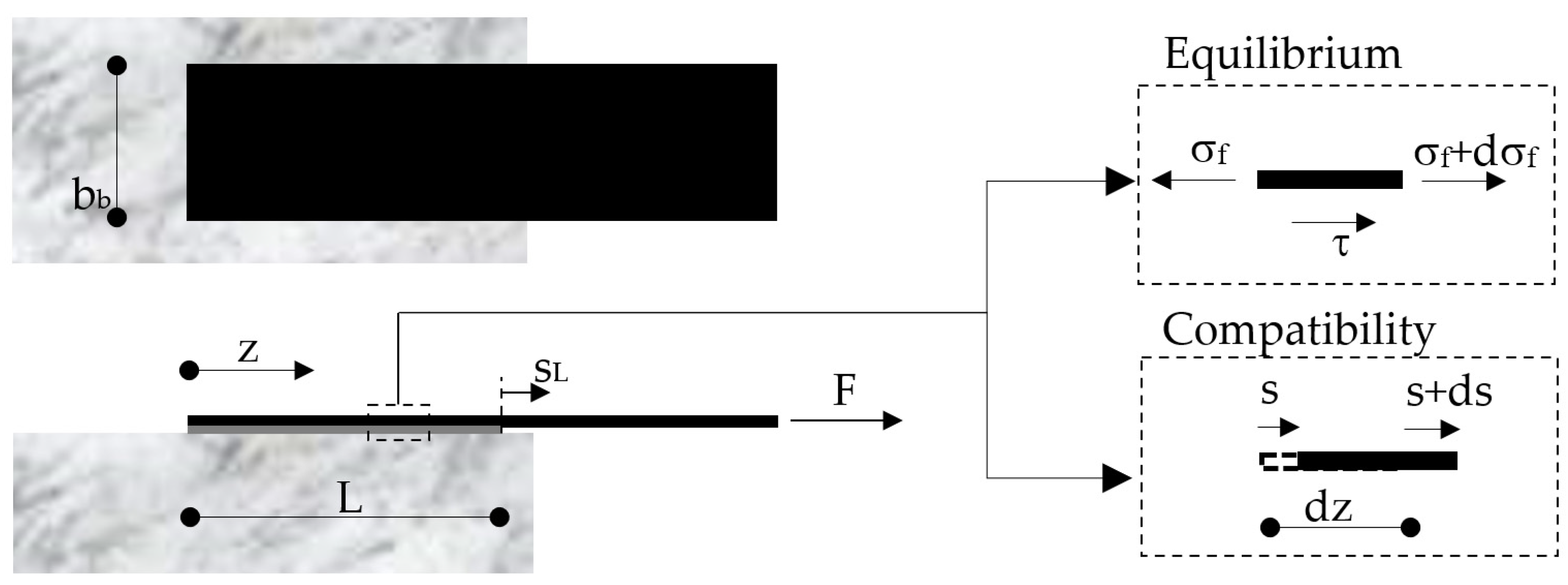

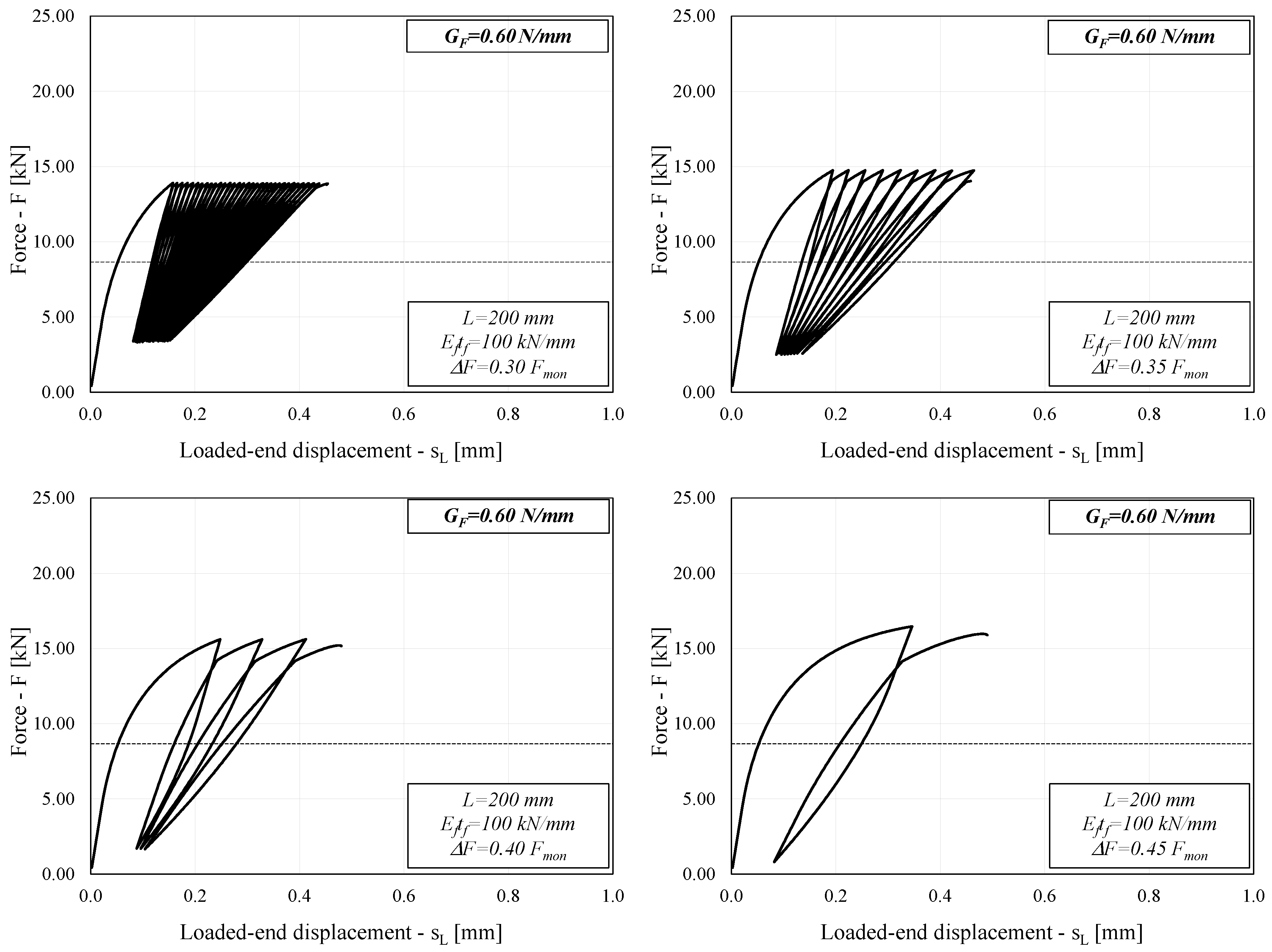
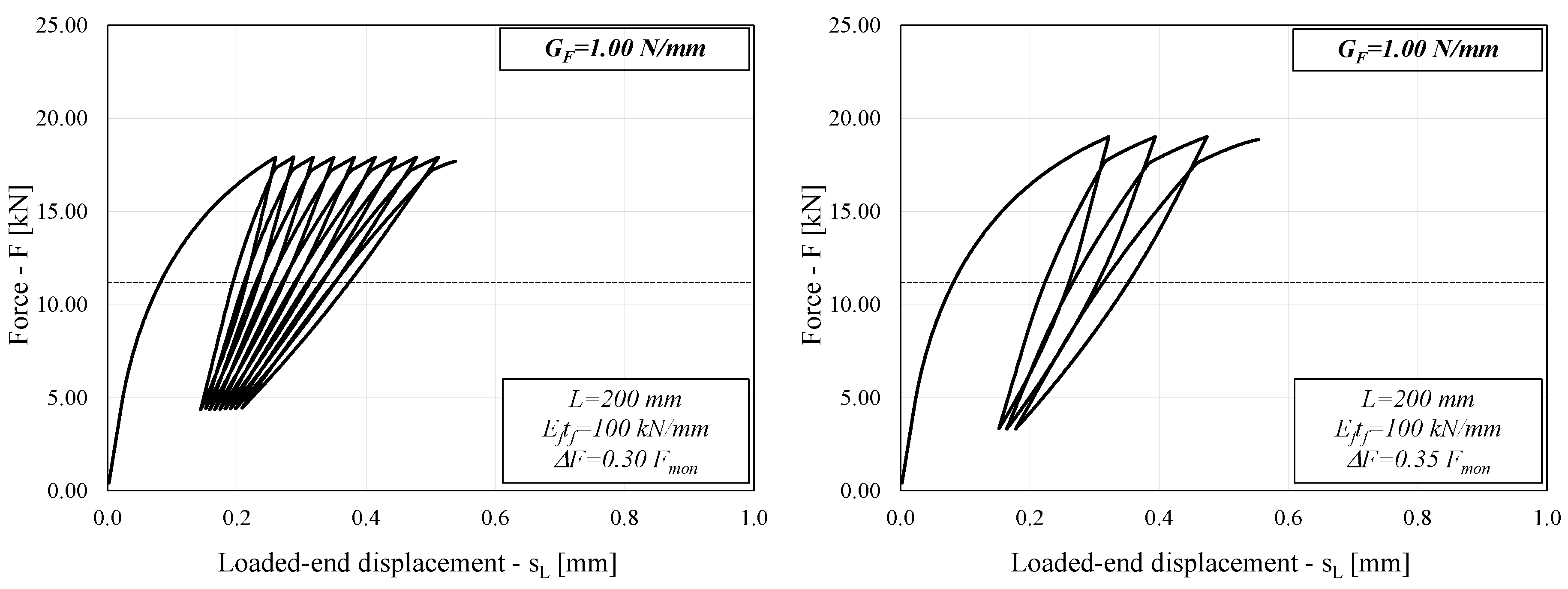
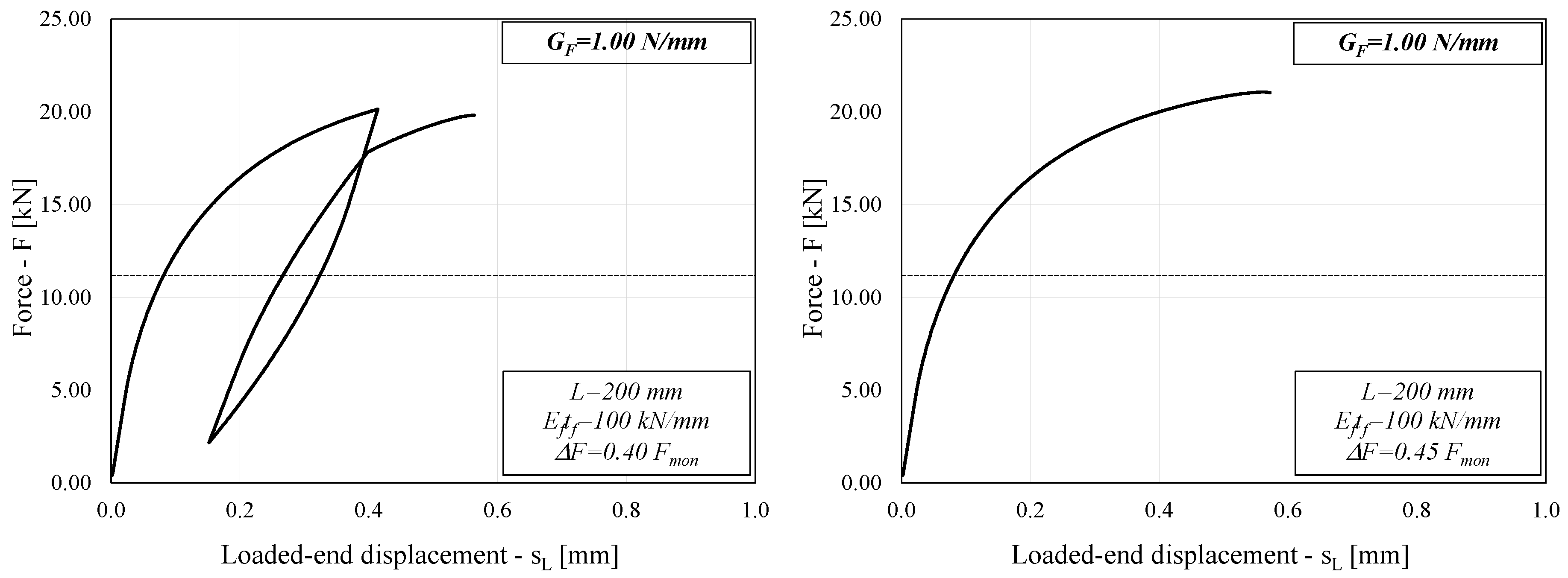
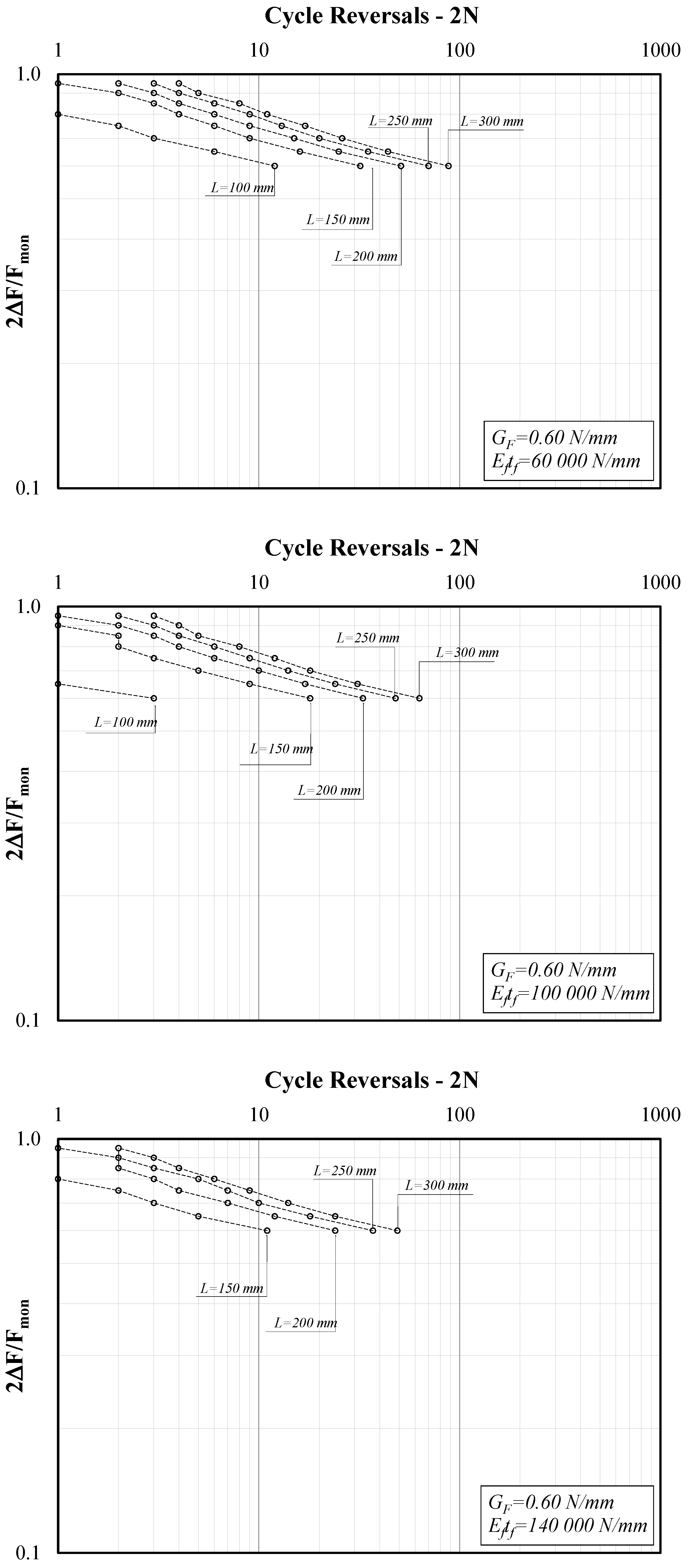
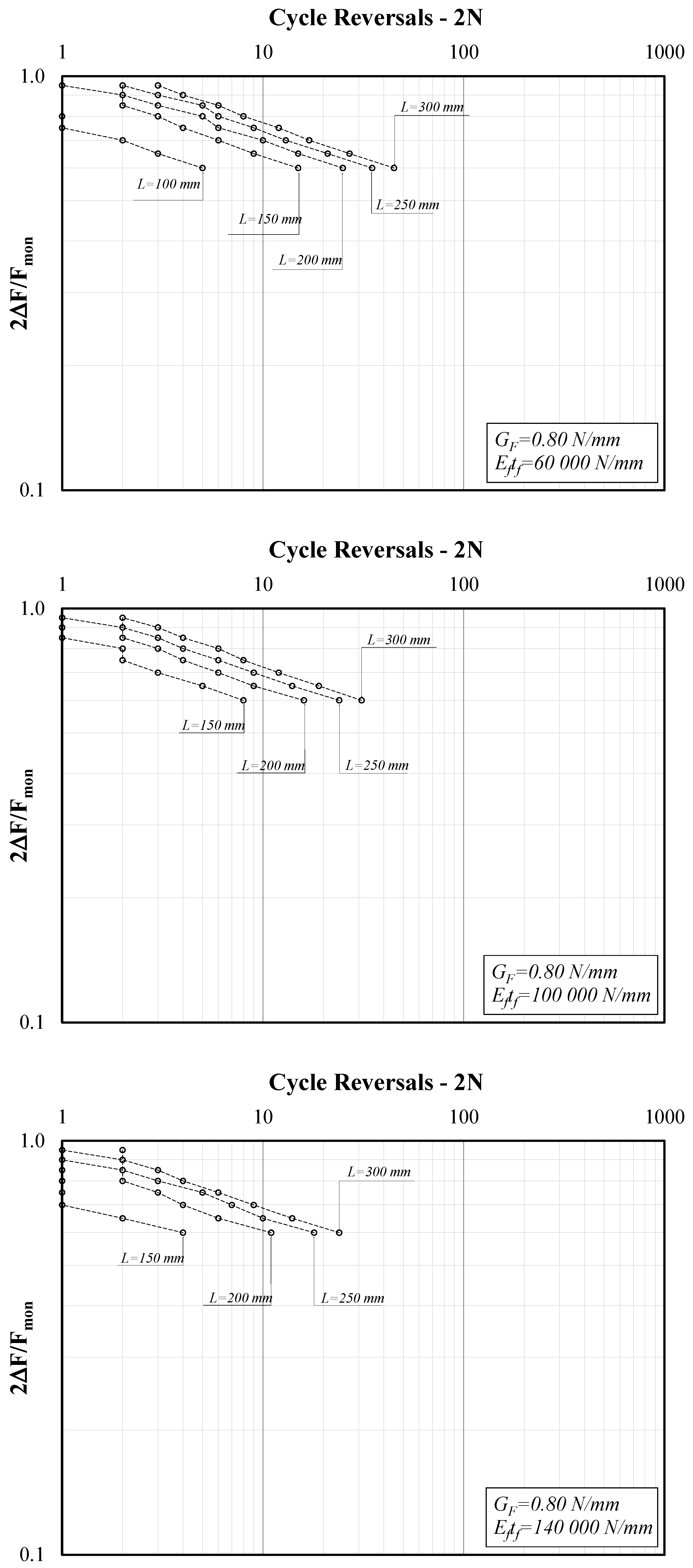
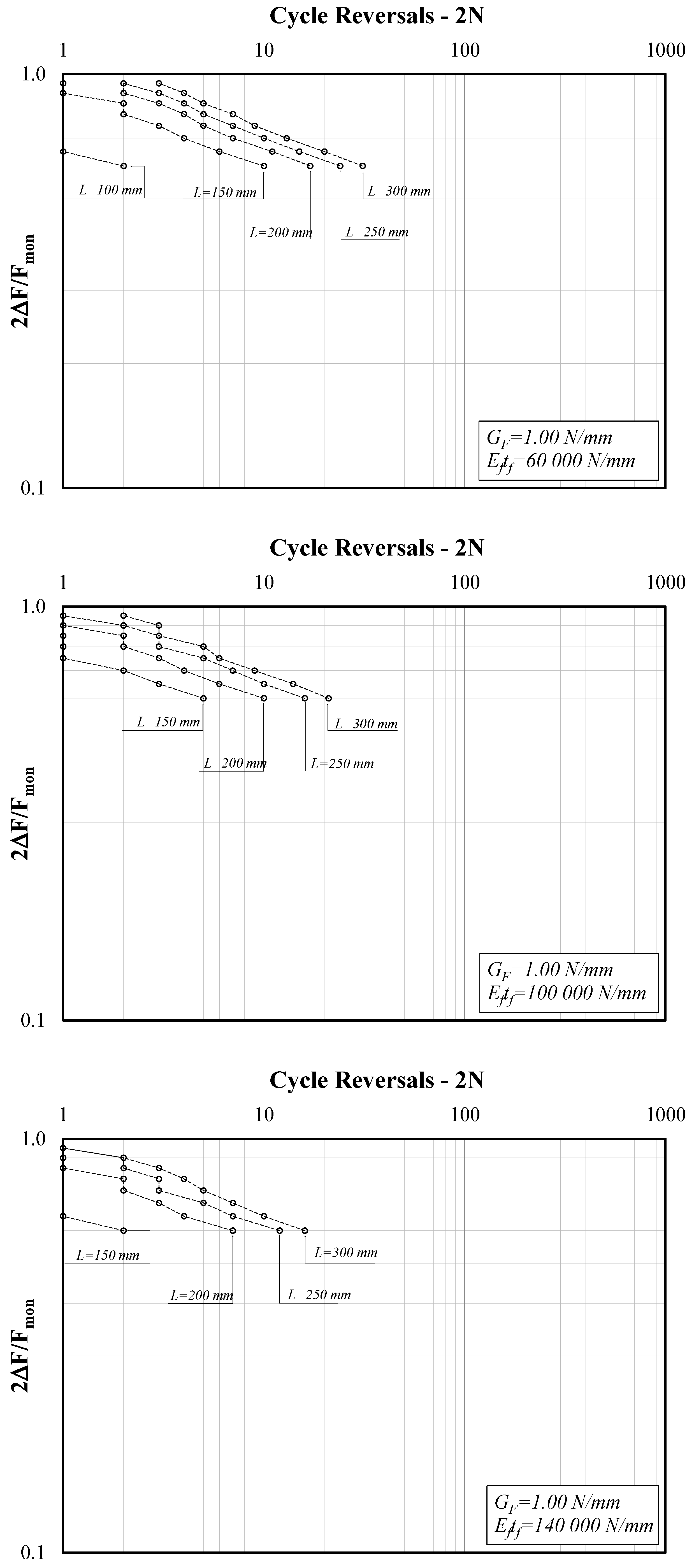
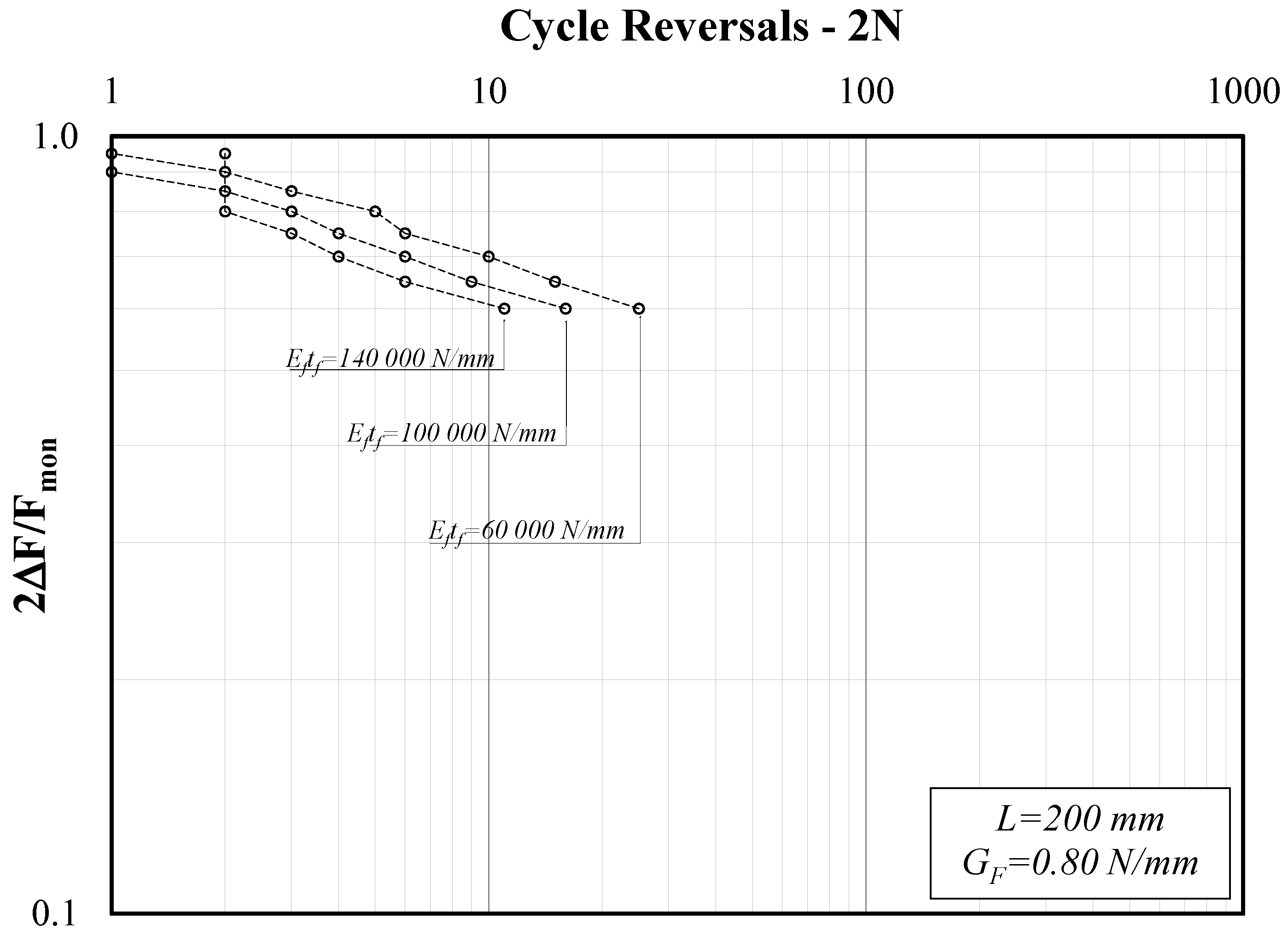
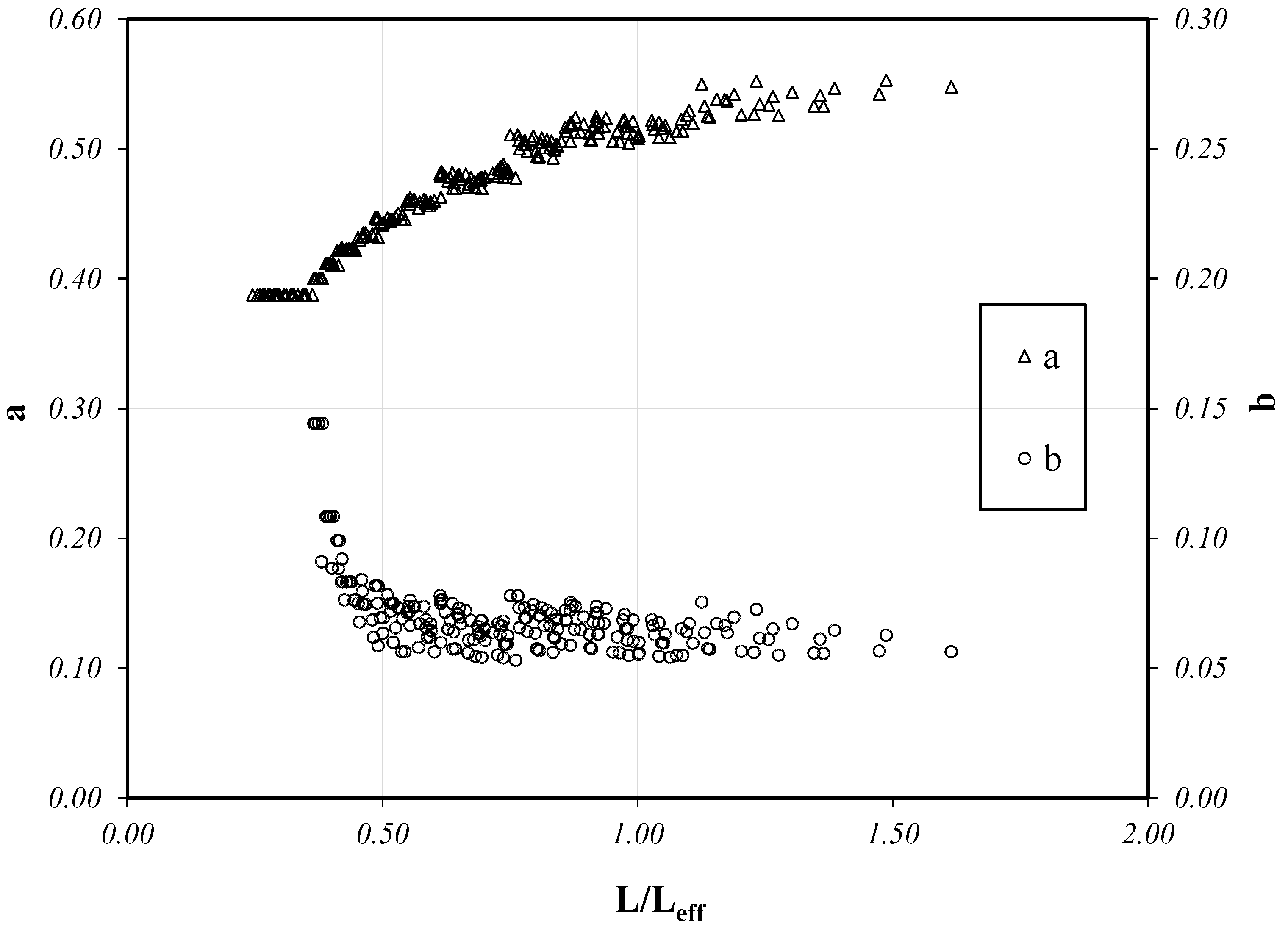
Publisher’s Note: MDPI stays neutral with regard to jurisdictional claims in published maps and institutional affiliations. |
© 2021 by the authors. Licensee MDPI, Basel, Switzerland. This article is an open access article distributed under the terms and conditions of the Creative Commons Attribution (CC BY) license (https://creativecommons.org/licenses/by/4.0/).
Share and Cite
Martinelli, E.; Caggiano, A. Low-Cycle Fatigue of FRP Strips Glued to a Quasi-Brittle Material. Materials 2021, 14, 7753. https://doi.org/10.3390/ma14247753
Martinelli E, Caggiano A. Low-Cycle Fatigue of FRP Strips Glued to a Quasi-Brittle Material. Materials. 2021; 14(24):7753. https://doi.org/10.3390/ma14247753
Chicago/Turabian StyleMartinelli, Enzo, and Antonio Caggiano. 2021. "Low-Cycle Fatigue of FRP Strips Glued to a Quasi-Brittle Material" Materials 14, no. 24: 7753. https://doi.org/10.3390/ma14247753
APA StyleMartinelli, E., & Caggiano, A. (2021). Low-Cycle Fatigue of FRP Strips Glued to a Quasi-Brittle Material. Materials, 14(24), 7753. https://doi.org/10.3390/ma14247753






